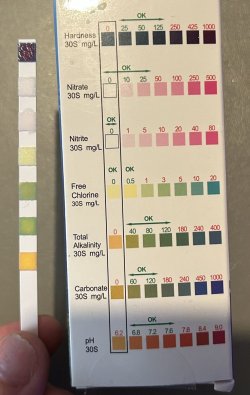OK let's not stress, we all had to start somewhere and many of us have made unintential mistakes.
I'm not sure that I can be of any help regarding ypur immediate situation but I can give you some basic info that is important with fish keeping.
Cycling your tank.
Fish produce ammonia through respiration and excretion...any left over food or organics rotting in the water will also produce ammonia which is extremely toxic to fish.
When ammonia is present, a bacteria starts to grow that 'eats' it. The byproduct is called Nitrite...which is also very toxic to fish.
Another colony of beneficial bacteria starts to grow that 'eats' the Nitrite and converts it to Nitrate which is less toxic to fish and can be removed by large weekly water changes.
Beneficial bacteria grows in your filter but more so on the surfaces in your tank and especially so within the substrate (which I highly recommend you get). Water you add to your tank must be dechlorinated before entering as the chlorine that's used to make our water safe to consume is toxic to fish and the beneficial bacteria we are trying to grow.
Your tank is fully cycled and fish safe when your test results read 0 for ammonia and 0 for Nitrite.
Test strips are not always reliable for accurate readings, most of us use a liquid testing kit, API do a good one. They are pricey but will last much longer and you'll get many many tests out of it.
If you know all this already, awesome.
It's great you have some plants already but it's recommended that you get a few more, stem plants especially as they're fast growers and will help keep your water parameters in shape by using ammonia and nitrate as food to grow.
Something else very important is your water hardness. You can find this by going to tour water providers website and looking up your postcode. You'll find it either as gH or ppm. This is important because it dictates what type of fish is suitable for the type of water you have. Tetras, gourami, betta, angelfish, corydoras etc all need softer water whereas guppies, platies, mollies, rainbow fish and your big African cichlids need hard water to live in.
It appears I've been on waffle settings here

I hope some of its useful to you!


 Though we wish it were with happier circumstances.
Though we wish it were with happier circumstances.